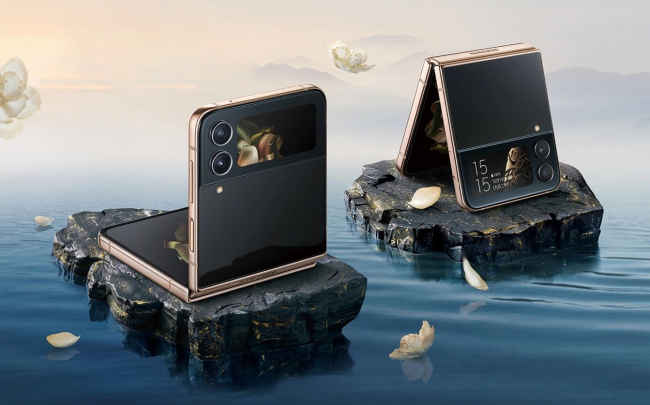The Infinix Zero 30 5G is an exemplary mid-range smartphone that is well worth its asking price. The design is fantastic, the AMOLED display is bright and vibrant, the performance is top-level for the price, and the battery life is pretty decent as well. My biggest gripes are the mediocre low-light camera performance (especially since daytime photos actually look pretty good) and only one major Android update – which may be a deal breaker for some.
Infinix is a brand that often flies under smartphone users’ radars, but it really shouldn’t. The company has consistently been launching value-for-money smartphones in the Indian market for a few years now, with specifications and features that often rival the leaders in the market. The Infinix Zero 30 5G is a prime example of that. Priced competitively at ₹23,999, the Infinix Zero 30 houses the capable MediaTek Dimensity 8020 processor, up to 12 GB of LPDDR4X RAM, a 108 MP triple camera setup, and 4K at 60 fps video capabilities on the selfie camera. The specifications are appealing on paper, but do they translate well in real-life usage? Let’s find out in my detailed review of the Infinix Zero 30 5G.
Infinix Zero 30 5G Review: Build and Design
There’s very little to critique about the Infinix Zero 30 5G’s design. The smartphone looks super premium for its price. The phone is available in two colourways – Golden Hour and Rome Green – both of which have their own quirks. The Golden Hour variant comes with a glass back with Gorilla Glass 5 protection, but it may be prone to catching fingerprints. The Rome Green variant, which I got for review, features a vegan leather back that feels luxurious to the touch. The phone is slim at only 7.9 mm and very lightweight at 182 g.

There’s a ‘Zero’ branding at the bottom of the back panel and the top left features the gigantic camera module. It is slightly raised and has a metallic feel to it. The camera island is golden in colour and this design choice may be a bit polarising because some may find it slightly garish. However, I think it works for the sub-₹25K price segment and the phone definitely stands out. There are two circular large camera rings and a smaller one for the 2 MP camera. There’s also a circular flash below the smaller camera ring.

The back and front curve into the body which is made of plastic but with a golden-coloured metallic sheen on it. The buttons on the left are sufficiently tactile and you also get dual stereo speakers with DTS Sound and Hi-Res audio support. There’s an in-display optical fingerprint sensor that’s quite accurate and fast. The phone is also rated IP53, which means it has protection against damage from splashes of water and dust. Overall, a massive thumbs up from my end here.

Infinix Zero 30 5G Review: Display
The Infinix Zero 30 5G sports a premium-looking curved display with minimal bezels on the sides and slightly thicker bezels on the top and bottom. It is a 6.78-inch AMOLED display with Full HD+ resolution and 144 Hz refresh rate. Scrolling on 144 Hz feels super smooth; and thankfully, the refresh rate applies in apps such as YouTube and Instagram too, which sometimes doesn’t happen on budget phones.

The display supports 100 per cent DCI-P3 colour gamut and comes with 2,160 PWM dimming. So, the strain on the eyes is lowered when you’re using the phone in darkness. The display is vibrant and pretty colour-accurate. It is also Widevine L1 certified, so you can watch shows in HD on OTT platforms. DRM Info tells me the phone supports HDR10, however, Netflix doesn’t detect that, which is a bummer. I hope Infinix can fix this via a software update.

Furthermore, the display is quite bright for the price. It is rated at 950 nits of peak brightness, and in my tests, I recorded about 915 nits in High Brightness Mode. So, screen legibility in harsh sunlight is not really an issue.
Infinix Zero 30 5G Review: Performance
Sporting the MediaTek Dimensity 8020 SoC, the Infinix Zero 30 5G proves to be quite the performer. While it definitely is not the fastest-performing phone in the mid-range segment, it gives its competitors a tough run for their money. The phone packs 8 or 12 GB of LPDDR4X RAM, I got the latter for review, and multitasking is exceptionally smooth.

Infinix also boosts this with Virtual RAM of 8 GB on the 8 GB RAM model and 9 GB on the 12 GB RAM model. The phone has 256 GB of UFS 3.1 storage, and I applaud Infinix for offering it across both variants given the size of apps, photos, and videos these days. There’s no expandable storage though, which is disappointing since it would be the cherry on top.
In benchmarks, the Infinix Zero 30 did a commendable job! It got one of the highest scores in its price segment, only to be beaten by the powerful Redmi K50i that comes with the Dimensity 8100 5 nm SoC. In GeekBench, once again the Infinix Zero 30 was near the top. The OnePlus Nord CE 3 5G (review) beat its Single Core score while the Redmi K50i (review) defeated it in the Multi-Core test. But still, top-level scores! The phone also scored exceedingly well, the best in our tests, in PCMark Work meaning it will be reliable to perform any productivity-related tasks.



As for GPU scores, we ran 3D Mark Wild Life Extreme and the Infinix got a stellar score of 1,253. In GFXBench’s tests, the Infinix Zero 30 gave the second-best performance, lagging behind only the Redmi K50i. In real-world gaming, the Infinix Zero 30 rarely faltered. I played Call of Duty: Mobile on High Graphics and Frame Rate settings, and it performed splendidly with no lag or stutter. Asphalt 9 also ran very smoothly on this phone, but the phone does heat up slightly during long sessions.

Neither will your day-to-day tasks such as calling, texting, and browsing social media and the web. It is also very capable of handling heavy-duty tasks such as photo and video editing but slows down slightly when rendering videos.
The UI of the Infinix Zero 30 5G looks surprisingly clean; the company has definitely taken steps to improve the overall look and feel of XOS. Animations are smooth, icons look clean, and it is a visually pleasing experience. There is some bloatware in the form of Infinix apps and some third-party apps. Sadly, you cannot uninstall any of these Infinix apps, so you’ll have to deal with them. Also, the Palm Store app sends a lot of notifications to download certain apps, which can get annoying. However, I did not face as much of an issue with bloatware as I did on some Xiaomi and Realme phones.
Sadly, the company only provides one major Android update and 2 years of security patches, which is lacklustre.
Infinix Zero 30 5G Review: Cameras
The Infinix Zero 30 packs a pretty decent camera setup. There’s a 108 MP Samsung ISOCELL HM6 primary camera with OIS, a 13 MP ultrawide shooter, and a token 2 MP macro lens. For selfies, the phone has a 50 MP Samsung ISOCELL JN1 sensor. Infinix has also provided up to 4K at 60 fps video on both the rear and front cameras, which is a rarity at this price.

The output of the 108 MP primary camera is pretty decent in daylight or indoor lighting. The dynamic range is good and the detail retention is decent as well. You will notice a bit of detail loss if you pixel-peep but the quality is good enough for quick social media shares. However, the colours are a bit of a hit-or-miss. In indoor lighting, I saw that the camera favoured turning the scene slightly yellow, even though there was no yellow lighting in the room. It didn’t happen outdoors, so it must be an issue with the phone’s AI processing.


Close up photos look good. The fringing is minimal and the background bokeh effect is nice and strong. Portrait shots have good edge detection but human skin tones are whitewashed, making them look unnatural.


The 13 MP ultrawide camera takes decent photos, however, the highlights are overexposed at times. There is also noticeable detail loss in the corners and barrel distortion, but the pictures are serviceable at this price. The 50 MP selfie camera has some focussing issues despite having autofocus, it sometimes refuses to lock focus on the face in difficult lighting conditions. The problem of over-smoothening and whitening the face is prevalent here as well.

So far, the cameras are pretty decent for the price, but they do falter in low light. The main camera takes shots with quite a bit of noise and low detail levels, so keep that in mind if you take a lot of shots during nighttime.

Infinix Zero 30 5G Review: Battery
The Infinix Zero 30 5G features a 5,000 mAh battery with 68 W PD 3.0 fast charging. The phone can be topped up from empty to full in 49 minutes, according to our tests, which is pretty good. The battery life of the Infinix Zero 30 5G is nothing to write home about, but it is decent enough for casual users. It doesn’t quite match up to the Vivo V29e or Samsung Galaxy F54’s battery performance but it stands its ground.

In our 4K video loop test, the phone lasted a good 14 hours and 14 minutes, which is pretty decent. The phone’s battery should last for over a day for most casual users, however, medium to heavy users may need to plug it in during the evening or just before sleeping.
Infinix Zero 30 5G Review: Verdict
The Infinix Zero 30 5G is an exemplary mid-range smartphone that is well worth its asking price. The design is fantastic, the AMOLED display is bright and vibrant, the performance is top-level for the price, and the battery life is pretty decent as well. My biggest gripes are the mediocre low-light camera performance (especially since daytime photos actually look pretty good) and only one major Android update – which may be a deal breaker for some.
The company is expanding its service centres across India, so after-sales service shouldn’t be a problem as well. The software has also improved tremendously, but there’s still room for some further refinement. Overall though, if you are not someone who clicks a lot of pictures in low light, the Infinix Zero 30 5G just may be one of the most well-balanced mid-range smartphones under ₹25,000.
from Mobile Phones Reviews https://ift.tt/WzslCti





























